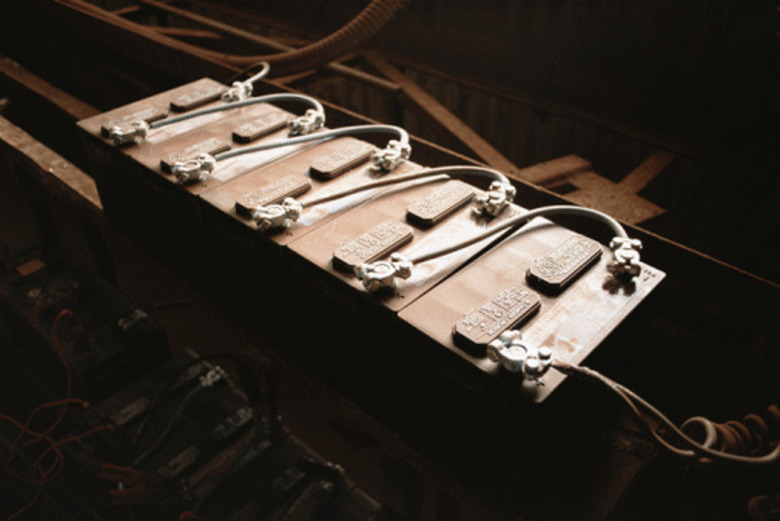How To Hook Up Batteries In A Series
In order to extend their capabilities, two or more batteries can be connected together either in parallel, or in series. If the batteries are connected in parallel, the total voltage produced is unchanged, but the capacity of the batteries is increased allowing them to provide more power and last longer. Two batteries connected in series will have the same capacity, but the voltage will be increased to the sum of the voltages provided by each battery. Many commercial batteries which offer higher voltages are made by connecting lower voltage cells in series. For example, a 6 volt battery could be produced by connecting four 1.5 volt cells together in series.
Step 1
Cut a piece of copper wire around 6 inches long, and using wire strippers remove 1/2 an inch of insulation from each end.
Step 2
Connect one end of the copper wire to the negative terminal of the first battery, and the other end to the positive terminal of the second battery.
Step 3
Measure the voltage across the two batteries by connecting the positive lead of the multimeter to the positive terminal on the first battery. Connect the negative lead from the multimeter to the negative terminal on the second battery. The multimeter display will show a total voltage equal to the sum of the voltage of both batteries. If two 1.5 volt batteries were connected together, the multimeter would show 3 volts.
Step 4
Repeat the process to add a third battery. Connect a wire from the negative terminal on the second battery to the positive terminal on the third battery. Measure the voltage across the three batteries by connecting the positive lead from the multimeter to the positive terminal on the first battery, and the negative lead to the negative terminal on the third battery. If 1.5 volt batteries are used, the multimeter will show 4.5 volts across the batteries.
Things Needed
- Copper wire
- Wire cutters
- Wire stripper
- Multimeter
TL;DR (Too Long; Didn't Read)
When connecting batteries in series, all the batteries should ideally be the same type and capacity, so they discharge at the same rate.
Warning
Never connect like terminals together, only connect together terminals with opposite polarity, i.e. negative to positive.
Cite This Article
MLA
Downes-Powell, Gareth. "How To Hook Up Batteries In A Series" sciencing.com, https://www.sciencing.com/hook-up-batteries-series-8002568/. 24 April 2017.
APA
Downes-Powell, Gareth. (2017, April 24). How To Hook Up Batteries In A Series. sciencing.com. Retrieved from https://www.sciencing.com/hook-up-batteries-series-8002568/
Chicago
Downes-Powell, Gareth. How To Hook Up Batteries In A Series last modified March 24, 2022. https://www.sciencing.com/hook-up-batteries-series-8002568/
